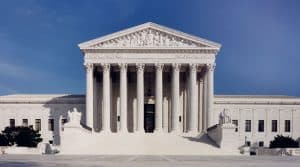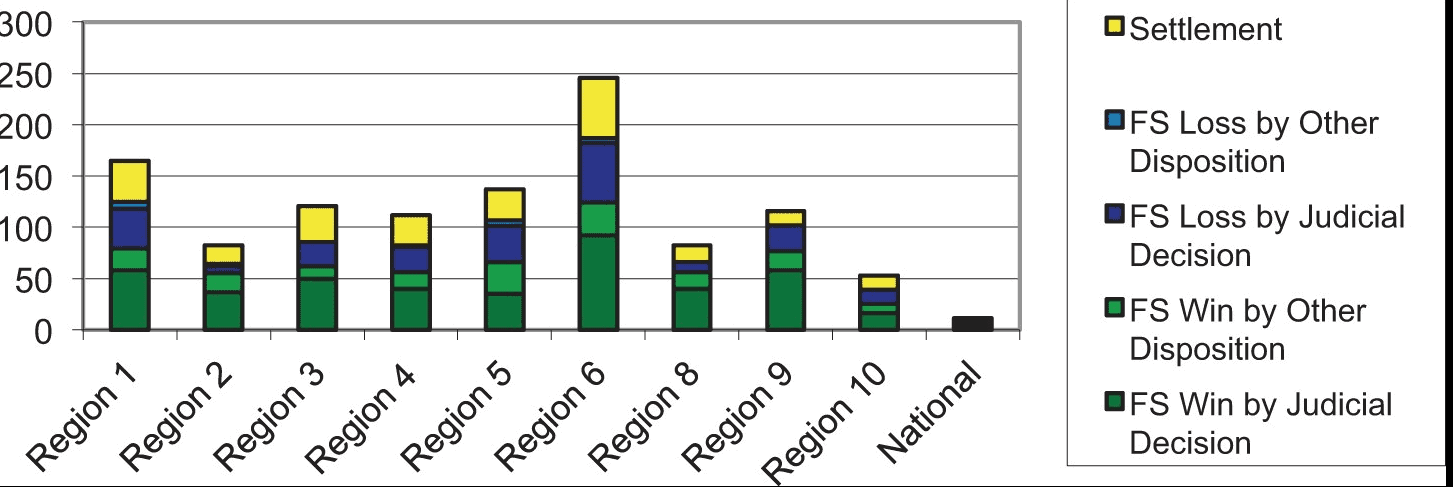Subtitle C actually says “addressing frivolous litigation” and Section 121 is titled “Commonsense Litigation Reform”
Here’s the text. We’re going to need help from lawyers out there..
a) IN GENERAL.—A court shall not enjoin a fireshed management project under this Act if the court determines that the plaintiff is unable to demonstrate that the claim 7 of the plaintiff is likely to succeed on the merits.
8 (b) BALANCING SHORT- AND LONG-TERM EFFECTS OF FOREST MANAGEMENT ACTIVITIES IN CONSIDERING INJUNCTIVE RELIEF.—As part of its weighing the equities while considering any request for an injunction that applies to any agency action as part of a fireshed management project under this Act, the court reviewing the agency action shall balance the impact to the ecosystem likely 15 affected by the fireshed management project of—
16 (1) the short- and long-term effects of under taking the agency action; against 18 (2) the short- and long-term effects of not undertaking the action.
20 (c) TIME LIMITATIONS FOR INJUNCTIVE RELIEF.—
21 (1) IN GENERAL.—Subject to paragraph (2), the length of any preliminary injunctive relief and stays pending appeal that applies to any agency action as part of a fireshed management project under this Act shall not exceed 30 days.1 (2) RENEWAL.—
2 (A) IN GENERAL.—A court of competent jurisdiction may issue one or more renewals of any preliminary injunction, or stay pending appeal, granted under paragraph (1).
6 (B) UPDATES.—In each renewal of an injunction in an action, the parties to the action shall present the court with updated information on the status of the fireshed management project.
11 (d) LIMITATIONS ON CLAIMS.—Notwithstanding any other provision of law, a claim arising under Federal law seeking judicial review of a fireshed management project shall be barred unless— such claim is filed not later than 120 days after the date of publication of a notice in the Federal Register of agency intent to carry out the proposed agency action;
This sounds like a time limit for filing.
19 (2) such claim is filed after the issuance of a record of decision or other final agency action with respect to the relevant proposed agency action; and
How could it be filed before the ROD is issued?
22 (3) such claim does not challenge the use of a categorical exclusion under this section.
I’m kind of lost in the negatives here. “a claim shall be barred unless it does not challenge the use of a CE? So claims about CE-hood would be barred? Under “this” what (?) section.
Section 122 sounds like the Cottonwood fix but maybe not.
ARBITRATION PILOT PROGRAM
This is always one of my favorites. People learn a lot from pilots. This one has a ceiling, no more than 15 projects per year per FS Region or BLM States. You could lower the numbers, but is anyone really against it? Apparently the results would not be subjected to judicial review, except “as 16 provided in section 10(a) of title 9, United States Code.” Maybe someone knows what that is.
COMMUNITY WILDFIRE RISK REDUCTION PROGRAM.
Then there’s a section on WUI. My friends who are involved in community wildfire programs tell me that this would be very useful
create a single, uniform application and portal for local communities seeking to apply for Federal financial assistance or 23 technical assistance programs targeted at reducing fire risk to communities
Also these:
SIMPLIFICATIONS.—In creating the portal under paragraph (1), the Secretaries and the Ad1ministrator shall seek to reduce the complexity and length of the application process.
18 (3) TECHNICAL ASSISTANCE.—The Secretary of the Interior shall provide technical assistance to communities looking to apply for financial assistance under the streamlined application and portal created under paragraph (1).
Of course, Congress can’t do that, but a really wild and crazy idea would be for States to try to simplify procedures for funding as well and maybe try to harmonize with the feds..
Then there’s section 202 which seems to be about controlling management of fires for resource benefits. That’s probably worth its own post, if anyone wants to take a look.
A Community Wildfire Defense Research Program (expanding JFSP to include):
(1) different affordable building materials, including mass timber;
5 (2) home hardening;
6 (3) subdivision design and other land use planning and design;
8 (4) landscape architecture; and
9 (5) other wildfire-resistant designs for structures or communities, as determined by the Secretary.
And a Community Wildfire Defense Innovation Prize
A new CE for power line operation and maintenance:
“the development and approval of a vegetation management, facility inspection, and operation and maintenance plan submitted under section 512(c)(1) of the Federal Land Policy and Management Act of 1976 (43 U.S.C. 1772(c)(1)) by the Secretary concerned; and 11 (2) the implementation of routine activities conducted under the plan referred to in paragraph (1).
Plus a change to FLPMA from 10 to 50 feet of a power line for hazard trees.
Seeds of Success
I imagine Defense is included here as federal lands include Forest Service, some Interior agencies and DOD. The point seems to be enhance the domestic supply chain of native seeds, in a manner coordinated across agencies. It seems like it’s about native plants perhaps not including trees, as it appears to be BLM focused. I’d put them (trees and other natives) together somehow and get them coordinated.
Biochar Demonstration Projects and Biochar Competitive Grants. (more on this later)
Accurate Hazardous Fuels Reduction Reports
This approach sounds plausible to me, certainly it needs clarification and consistency. Many other groups, of various persuasions, have pointed out the problems with the current approach.
Public Private Wildfire Technology Deployment and Testbed Partnership
This seems like a mechanism for coordination among agencies to ensure real-world testing of new technologies. Hopefully, this will ensure that less USG funding is spent on random “sounds plausible” technologies, and gets them to field testing. Note that it includes say, thinning as a hazardous fuels reduction, so all our friends interested in mechanizing and improving marking and harvesting would be included.
(A) hazardous fuels reduction treatments or activities;
5 (B) dispatch communications;
6 (C) remote sensing, detection, and tracking;
8 (D) safety equipment; and
9 (E) common operating pictures or operational dashboards; and
11 (3) partner with each covered entity selected to participate in the Pilot Program with the appropriate covered agency to coordinate real-time and on-the-ground testing of technology during wildland fire mitigation activities and training.
GAO Study on Forest Service Policies
(A) the effectiveness of Forest Service wildland firefighting operations;
(B) transparency and accountability measures in the Forest Service’s budget and accounting process; and
(D) the suitability and feasibility of establishing a new Federal agency with the responsibility of responding and suppressing wildland 2 fires on Federal lands;
What happened to C? Also I’d have two studies, one that looked at the Interagency wildland firefighting and the idea of a new Federal Agency (why just FS?) and a separate one for FS budget transparency and accountability.
Forest Service Western Headquarters Study
It’s not clear to me whether this is to substitute for Regions or to add another layer of bureaucracy. Perhaps it will be clear in FS testimony tomorrow.
Summary: there are lots of interesting ideas in this bill. It will be interesting to see the FS testimony. What do you think?




